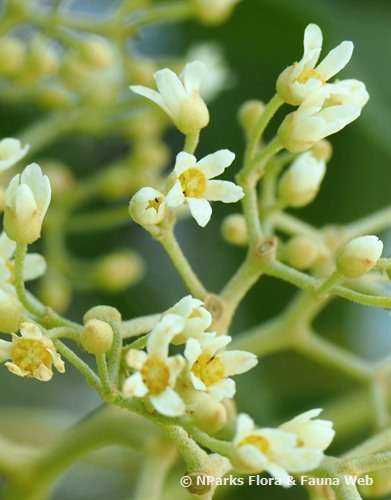
Back
Aleurites moluccanus (L.) Willd.
| Family Name: | Euphorbiaceae |
| Synonyms: | Aleurites triloba, Corton moluccanus |
| Common Name: | Candle Nut, Buah Keras, Candle Nut Tree, Indian Walnut, Keras, Kemiri, Kembiri, Lumbang Tree, Kukui (Hawaiian), 烛果树, 石栗 |
Name
Classifications and Characteristics
| Plant Division | Angiosperms (Flowering Seed Plants) |
|---|---|
| Plant Growth Form | Tree |
| Mode of Nutrition | Autotrophic |
Biogeography
| Native Distribution | China, Taiwan, India, Sri Lanka, Southeast Asia, the Pacific Islands |
|---|---|
| Native Habitat | Terrestrial |
| Preferred Climate Zone | Tropical |
| Local Conservation Status | Non-native (Spontaneous (Casual)) |
Description and Ethnobotany
| Growth Form | Tree with large and wide-spreading crown, able to grow up to about 20 m tall. |
|---|---|
| Trunk | Bark is fairly smooth and greyish-brown, girth size about 9 - 15 m wide. |
| Foliage | Green leaves, simple and alternate arrangement, entire and wavy margins, usually 3 to 5-lobed, younger leaves tend to be palmately divided, older leaves more ovate in shape. Leaf blade measuring about 10 - 20 cm long, presence of 2 glands at the junction of the leaf base. |
| Flowers | Separate male and female flowers on the same tree, greenish-white and fragrant, borne on a terminal panicle inflorescence about 10 - 15 cm long, arrangement of the small male flowers surrounding the female flower. |
| Fruit | Fruit is a green to brownish indehiscent globose drupe, measuring about 5 - 6 cm long and 5 - 7 cm wide, contains 1 - 2 hard-shelled black seeds. |
| Others - Plant Morphology | In 1959, this tree was made the official tree of the State of Hawaii because of its many uses to the ancient Hawaiians and how its ornamental form enhances their beloved mountains. |
| Etymology | Genus Aleurites is from the Greek word "aleuron" which means "floury". Species moluccana means from Maluku, Indonesia. The common name "Candle Nut" is from the practice by the Hawaiians of using the nuts (kernels) for lighting houses. |
| Ethnobotanical Uses | Food (Herb or Spice): In Indonesian and Malaysian cuisine, the nut is often used in cooking. Medicinal: In Japan, the bark is used to treat tumors. In Java, the bark is also used to treat bloody diarrhea and dysentery. In the Malaya region, the pulped kernel is used in poultices for fevers, ulcers, headaches and swollen joints. Timber & Products: The oil extracted from the seeds can be used as a substitute for diesel and also as a wood preservative. |
Landscaping Features
| Desirable Plant Features | Ornamental Flowers |
|---|---|
| Landscape Uses | Parks & Gardens |
Fauna, Pollination and Dispersal
| Fauna Pollination Dispersal Associated Fauna | Bird-Attracting |
|---|---|
| Pollination Method(s) | Biotic (Fauna) |
| Seed or Spore Dispersal | Biotic (Fauna) |
Plant Care and Propagation
| Light Preference | Full Sun |
|---|---|
| Water Preference | Moderate Water |
| Plant Growth Rate | Moderate |
| Rootzone Tolerance | Moist Soils, Well-Drained Soils |
| Propagation Method | Seed |
Foliar
| Mature Foliage Colour(s) | Green |
|---|---|
| Foliar Type | Simple / Unifoliate |
| Foliar Arrangement Along Stem | Alternate |
| Foliar Apex - Tip | Acuminate |
| Leaf Area Index (LAI) for Green Plot Ratio | 4.0 (Tree - Dense Canopy) |
Floral (Angiosperm)
| Flower Colour(s) | White |
|---|---|
| Flower Grouping | Cluster / Inflorescence |
| Flower Location | Terminal |
| Inflorescence Type | Panicle |
Fruit, Seed and Spore
| Mature Fruit Colour(s) | Brown, Green |
|---|---|
| Seed Quantity Per Fruit | Few (1-5) |
Image Repository
Others
| Master ID | 1409 |
|---|---|
| Species ID | 2702 |
| Flora Disclaimer | The information in this website has been compiled from reliable sources, such as reference works on medicinal plants. It is not a substitute for medical advice or treatment and NParks does not purport to provide any medical advice. Readers should always consult his/her physician before using or consuming a plant for medicinal purposes. |

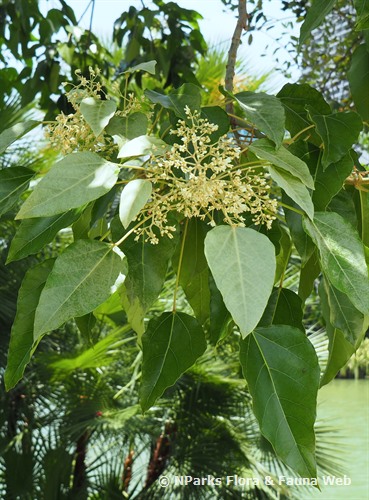
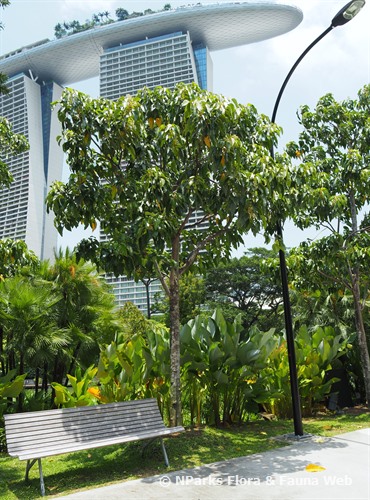
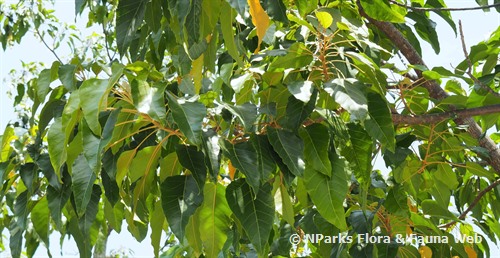

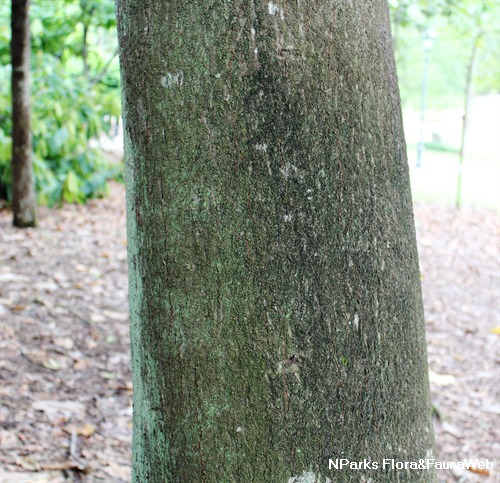
_lowres.jpg)
_lowres.jpg)